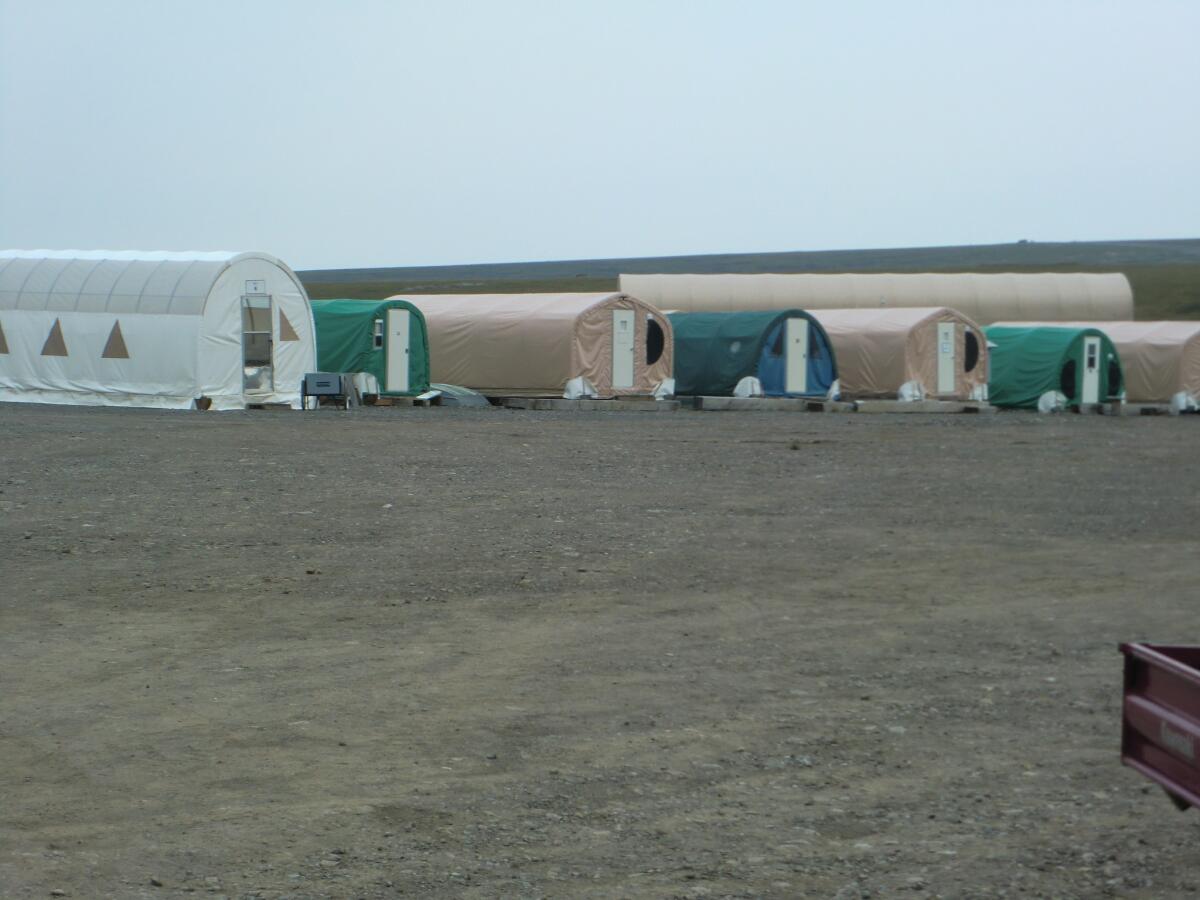Opinion: A reality check from the Arctic for global warming deniers

- Share via
I spent a few hours Wednesday in a boat on an Arctic lake with two UC Santa Barbara researchers, sending various gauges to the bottom, then moving to a new place and pulling them up — while a cold rain fell steadily on us. The air temperature was a little over 45 degrees Fahrenheit, the lake water was about 6 degrees, and despite a good rain jacket and rain pants, I came out of the experience significantly dampened.
After we motored back to shore and had a hot drink, I changed into warm clothes and huddled over my laptop, while they headed back out for more hours of chilling work.
One of the stranger complaints I hear from climate deniers is that the alarm about global warming is manufactured by scientists so that they can get fat grants and make money. (A recent study found that people who tend to believe in conspiracies have the highest tendency to reject solid scientific evidence, regardless of their political or religious background. For instance, there is tremendous evidence that childhood vaccines do not play a role in the increasing number of autism cases, but conspiracy theorists cling to the one thoroughly discredited semi-study on the topic.)
If only the deniers had the opportunity I’ve had for the last week-plus to live at the Toolik Field Station, about 120 miles south of Alaska’s northernmost outpost, and follow scientists around on their field research.
Getting here involves a nearly 400-mile drive from Fairbanks on a slippery dirt road that has been identified as one of the 10 most treacherous highways in the world. They (and I) live in Weatherports — large, musty tents on raised wooden platforms, stretched over frames so they look like large Conestoga wagons. Bed linens consist of sleeping bags, in temperatures that even in late June have dipped below freezing some nights.
One laundry is allowed every two weeks, and two showers a week, two minutes each. How almost everyone actually bathes is at the lakeside sauna. Large pitchers of water are heated on the railing around the wood-fired oven. We take them outside to the deck, no matter what the weather, and pour the water — sparingly; it takes awhile to heat more pitchers for others — over ourselves to shampoo and wash. Then we all jump back into the warmth of the sauna to toast off the chill.
The UC Santa Barbara scientists are examining the release of greenhouse gases from lakes, and how and by what processes the gases are trapped or released. It involves complex measurements of water slopes, salt content and underwater waves that change with the seasons. That means that the lead researcher skis over the lake during the snowbound seasons and drops her measuring instruments through ice holes. No wonder she bought a pair of ice-fishing gloves.
Most of the research involves long days of sloshing through rivers or muddy, uneven tundra. Some researchers “weed” plots of tundra to figure out which plants tend to dominate. Others bend over tussocks for hours looking for the nests of the Lapland longspurs migratory birds that lay their eggs in the hollows. More hours are spent in cramped labs that are basically small mobile homes perched on large wooden blocks. The bathrooms are elevated outhouses.
Right now, the Arctic is a carbon “sink,” holding more of the greenhouse gas in its plants and permafrost than it emits, said George Kling, a professor of ecology and evolutionary biology at the University of Michigan, who’s among the chief researchers here. But the balance is fairly narrow; the goal of much of the research is to determine not only how climate change will affect Arctic ecology but whether it will change the balance so that the Arctic adds carbon to the atmosphere instead of taking it out.
That has worldwide implications. As Kling is fond of saying, what happens in the Arctic doesn’t stay in the Arctic. The air will circulate throughout the Western Hemisphere in about two years. Right now that means some of our carbon is making it back to the Arctic and being sequestered for us. But at some point, it could mean that the Arctic contributes to the warming of the planet.
I’ll be returning Saturday to Southern California’s beaches, to paved roads, groomed trails and flushing toilets. Many of the researchers here will spend weeks in muddy, mosquito-ridden camp to try to unravel the mysteries of change in a remote outpost. One of them told me that despite her doctorate and years and years of study, she makes $40,000 a year.
I think we can strike the notion that scientists have found convincing evidence of climate change because of the big bucks and cushy lifestyle.
More to Read
A cure for the common opinion
Get thought-provoking perspectives with our weekly newsletter.
You may occasionally receive promotional content from the Los Angeles Times.










